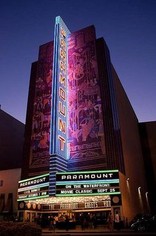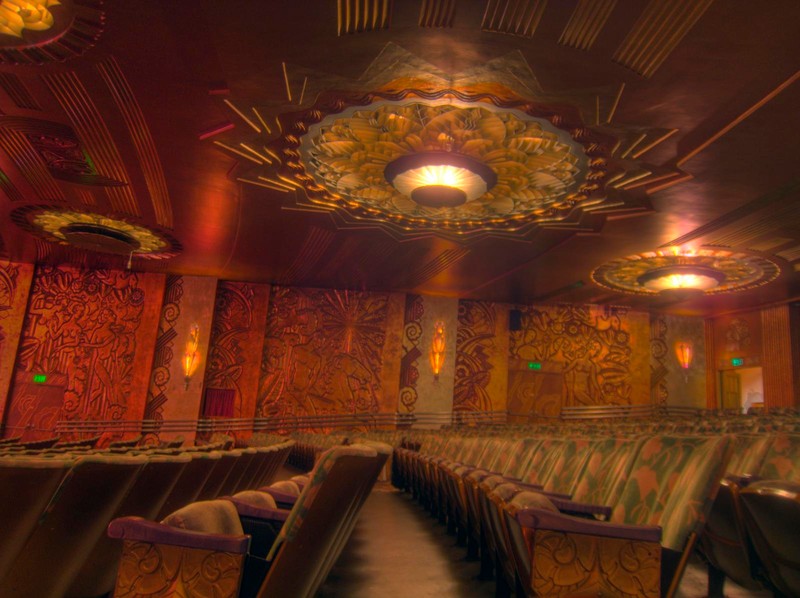The Paramount Theatre
Introduction
Text-to-speech Audio
Images
The Paramount's neon sign lit up at night time.

Paramount Theatre Number 3.

Backstory and Context
Text-to-speech Audio
The Paramount Theatre was originally conceived as a movie palace during the rise of the motion picture industry in the late 1920s. In 1925, Paramount Publix Corporation, the theater division of Paramount Pictures, began a construction program resulting in some of the finest theaters built in the United States.
The Paramount Theater in Oakland opened at a cost of $3 million on December 16, 1931. The gala premiere on the Grand Opening was attended by Kay Francis, star of the opening film, The False Madonna, as well as cast members Conway Tearle, Charles D. Brown, Marjorie Gateson and William Boyd. Other notable guests included California's Governor James Rolph and Oakland mayorMayor N. Morcom.
In June 1932 the Paramount closed after being unable to meet its operating expenses of over $27,000 per week. The Paramount stayed closed for nearly a year. When it reopened in May 1933, it was under the management of Frank Burhans, who was commissioned to get the Paramount out of debt. His method for achieving this was to operate without either a stage show or an orchestra, and to unscrew light bulbs in an effort to reduce energy expenses.
In the 1950s, popcorn machines and candy counters were installed, and on the lobby walls the incandescent lights were taken out and replaced by neon tubing in red and blue. But despite the theatre's success, it was losing customers to television towards the end of the 1950s and 1960s.This forced the Paramount to close for a second time in 1970 as it just couldn't compete with the smaller movie theatres.
The building was purchased by the Oakland Symphony Orchestra for $1 million who reopened the Paramount on September 22, 1973. The Oakland Symphony sold out nearly all seats on subscription sales and sold out a majority of individual concerts. But despite this, the building was still a financial burden. Rather than take on these mounting costs, the Oakland Symphony transferred the Paramount to the City of Oakland for $1, in exchange for forty years of free rent. They continued with that agreement until the Oakland Symphony Orchestra filed for Chapter 7 bankruptcy in September 1986.
Seeing an opportunity, a group of seven private citizens banded together and approached city officials with the idea of managing and operating the Paramount on behalf of the city as a nonprofit organization. They agreed, and the management structure has remained to this day.
Sources
History of the Paramount Theatre. Paramount Theatre. Accessed June 26, 2017. http://www.paramounttheatre.com/history1.html.
